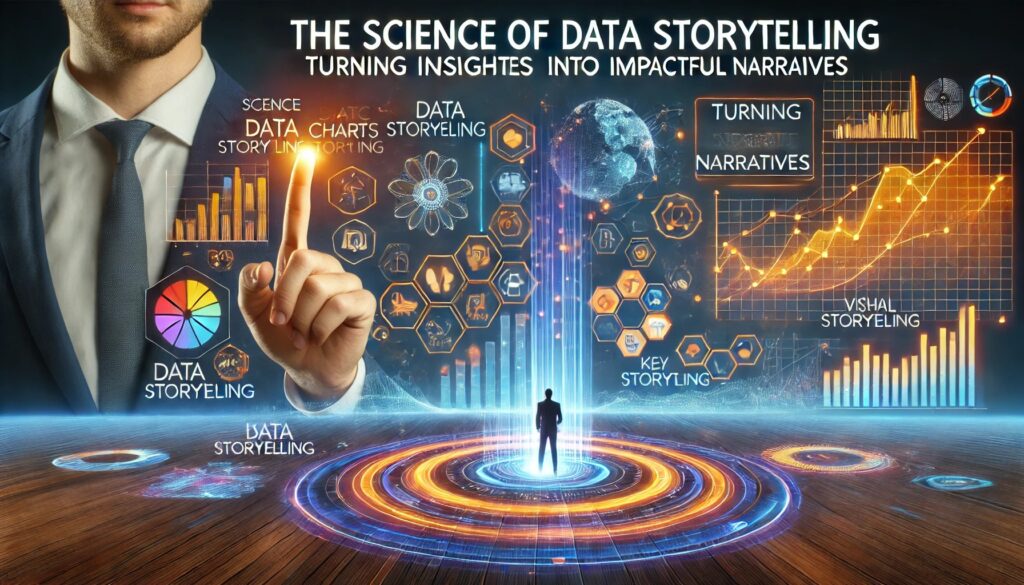
In today’s data-driven world, raw numbers alone don’t drive decisions—compelling narratives do. Data Science Storytelling bridges the gap between complex data and actionable insights, making it a vital skill for data professionals. By mastering the art of storytelling, you can ensure your analysis resonates with stakeholders and inspires action. This guide from Bictors offers practical tips to improve your presentation skills, visualization techniques, and communication strategies for impactful storytelling.
What is Data Storytelling?
Data storytelling is the process of combining data, visuals, and narrative techniques to convey insights effectively. It transforms raw numbers into meaningful stories that can influence decisions, align teams, and spark innovation.
A successful data story has three key components:
- Data: The foundation of the story—accurate, relevant, and insightful.
- Visualizations: Charts, graphs, and visuals that enhance understanding.
- Narrative: A compelling storyline that ties everything together.
Tips for Improving Data Storytelling
1. Know Your Audience
Understanding your audience’s needs and expertise level is crucial. Tailor your story to address their pain points, priorities, and goals. Use language and visuals they can relate to for maximum engagement.
2. Create Clear and Simple Visuals
Good visualizations enhance understanding without overwhelming the viewer. Use tools like Tableau, Power BI, or Excel to create intuitive graphs and charts. Stick to clean layouts, avoid clutter, and use colors strategically to highlight key points.
3. Build a Strong Narrative Structure
Every data story should have a beginning, middle, and end:
- Beginning: Introduce the context or problem.
- Middle: Present the data and insights.
- End: Offer solutions or recommendations.
4. Emphasize Key Takeaways
Ensure your audience remembers the most critical points. Highlight key insights in your visuals and reiterate them in your narrative.
Also Read: Role of Data Science in Sustainability and Climate Action
5. Practice Stakeholder Communication
Effective storytelling is a two-way street. Engage your audience by encouraging questions and feedback. Be prepared to explain your data and reasoning in a clear and concise manner.
6. Use Real-World Examples
Incorporating examples, analogies, or case studies makes your story relatable. This approach helps your audience connect emotionally with the data.
How Bictors Can Help You Master Data Storytelling
Becoming a proficient data storyteller requires a blend of technical skills, creative thinking, and communication expertise. Bictors, a leading data institute platform based in Bangalore, India, can equip you with all these skills and more.
Why Choose Bictors?
- Hands-On Training in Visualization Tools: Learn to create impactful visualizations using tools like Tableau and Power BI with real-world projects.
- Personalized Mentorship: Bictors offers expert mentorship to help you develop your storytelling and communication skills.
- Industry-Relevant Curriculum: Courses designed with industry input ensure you’re prepared to meet real-world stakeholder expectations.
- Workshops on Stakeholder Communication: Interactive sessions guide you in presenting your findings effectively and building confidence in public speaking.
Unlock Your Storytelling Potential
At Bictors, you’ll not only learn how to analyze data but also how to turn your insights into compelling narratives that drive change. Whether you’re a budding data professional or a seasoned analyst looking to enhance your communication skills, Bictors provides the resources and guidance you need to succeed.
Data Science storytelling is more than a skill—it’s an art that can elevate your career. With Bictors, you’ll gain the expertise to create narratives that leave a lasting impact. Start your journey toward mastering the science of storytelling today!